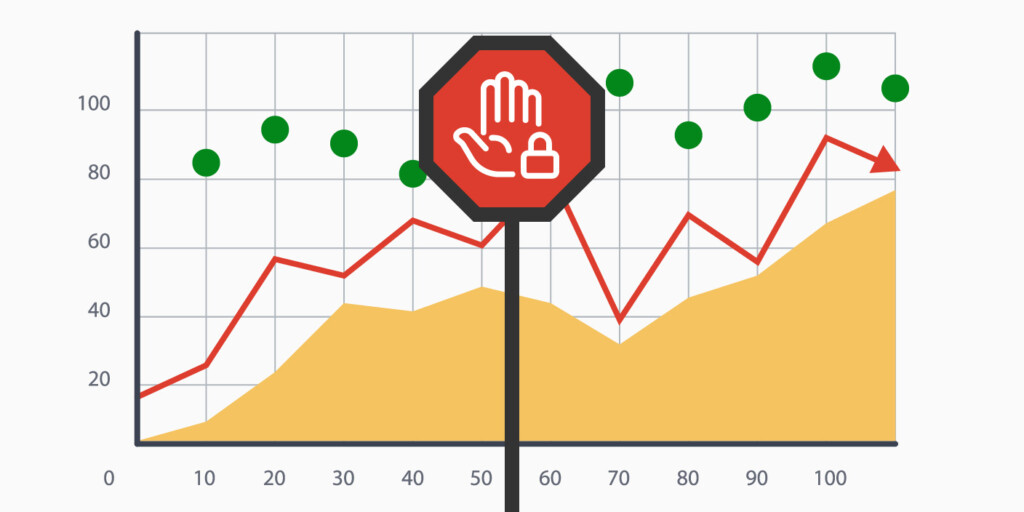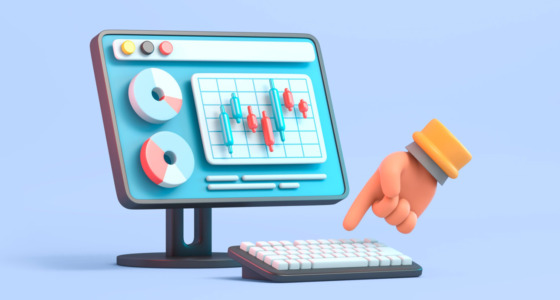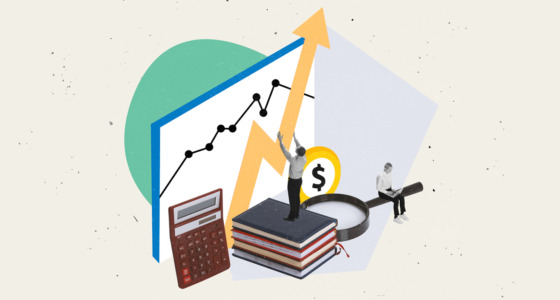

People think that risk management is purely analytical, based solely on objective assessments of probabilities and potential outcomes. But there is a psychological bias called the hot-cold empathy gap. It suggests that emotional states, like hunger or fatigue, affect how people assess risks and make decisions.
So, before you build your risk management strategy, make sure you’re full and well-rested. And then incorporate these techniques with confidence:
Trailing stop loss

A regular stop loss is triggered when the market hits a certain price. Then the trade is closed out, and you’ve successfully limited your losses. A trailing stop loss is a variation of stop loss that allows you to set a dynamic level for the order. If the asset price moves in your favor, the trailing stop loss will move with it. As a result, you’re able to lock in profits. And at the same time, you’re still giving your position room to grow.
The use of trailing stop loss is an important strategy, especially in volatile markets. It’s a simple yet effective way to manage risk without limiting yourself too much. Plus, thanks to modern trading platforms, the tool is absolutely straightforward to implement.
Risk no more than 1% of your portfolio on any single trade
Here, the idea is to limit your exposure to any one trade. Even if your initial assessment turns out false, you don’t risk losing a significant amount of your portfolio. You’ll still have plenty of capital left to trade another day.
Consider the worst-case scenario when you’re only risking 1% of your portfolio. Let’s say you have a $10,000 portfolio, and you want to enter a new position. The 1% rule means you’re willing to risk $100 on this trade. If the market moves in the opposite position than anticipated and you’re stopped out at a loss, you’ll only lose $100. It’s still unpleasant but manageable.

Diversifying risks
Diversification is a strategy to spread your capital across different trades and assets. The overall goal is to avoid being overly exposed to any one trade or market. If one trade or asset doesn’t perform as well as you’d hoped, there are other trades and assets that can help to balance out your losses.
In addition to diversifying trades and assets, you should also consider diversifying your trading strategies. For example, you’ll use a strategy that relies heavily on technical analysis for some trades and lean into fundamental analysis for others. Or you can use a combination of short-term and long-term trading strategies. The key is to have a well-rounded approach that takes into account different market conditions and trends.
Risk assessment, planning, and the use of technology

Risk assessment and planning are vital steps that any trader should take before making any moves. By analyzing the potential risks and rewards of each trade, you can make informed decisions and reduce the likelihood of making costly mistakes.
Of course, this process is made much easier with the use of technology. But the good news is that you’re living in the golden age of technology, and there are countless tools available — from automated risk management systems to advanced trading algorithms.
However, remember that technology is only a tool; it’s not a substitute for good judgment and careful planning. As a smart trader, you need to understand the limitations of the technology you’re using and not rely on it entirely. You should still take the time to analyze data and decide what to do based on your own experience and expertise.
Let’s get one final thing straight — you can’t entirely get rid of risk when it comes to trading. It’s an inherent part of the process, and there’s always the chance that things might not go according to plan. However, that doesn’t mean you shouldn’t try to minimize that risk as much as possible.
Sources:
Why do we mispredict how much our emotions influence our behavior? The Decision Lab
What is a trailing stop loss in day trading? The Balance Money
The importance of diversification, Investopedia








